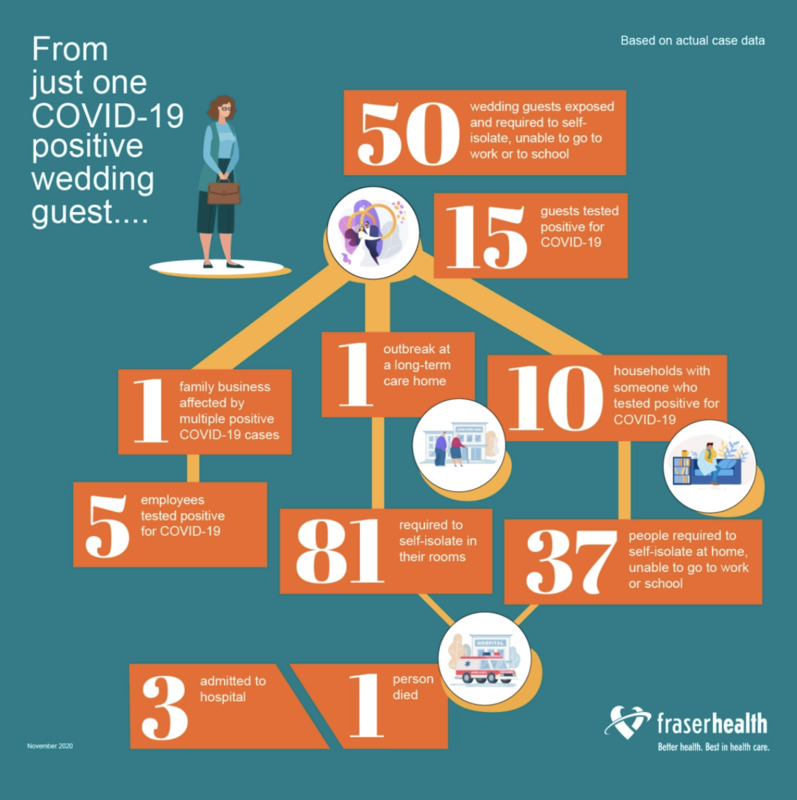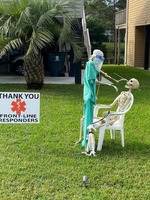Transmit, Test, and Trace: Tracking COVID-19
Transmission
Since the beginning of the pandemic health officials worked to understand how COVID-19 is transmitted. Once health officials understood the need for social distancing, outbreak visualizations helped Canadians understand how COVID-19 spreads.
Outbreak visualizations were critical for maintaining public health. They easily conveyed to Canadians how quickly COVID-19 spread and emphasized the need to follow public health restrictions. Graphs like these depicted how a single case could become a serious outbreak if proper precautions were not taken.
Testing
Nasal swabs were the most common form of COVID-19 tests in Canada. Public health units created testing centres in parking lots, bus stations, and hospitals to accommodate the growing need to be tested.
Testing was a critical part of the medical response to COVID-19. Without testing and tracing, transmission tracking would have been nearly impossible. Testing was the first step of maintaining public health.
Tracing
When individuals tested positive for COVID-19, it was vital to trace all the people with whom they had come in contact because they could carry the virus without symptoms. Tracing potential exposures prevented people from unknowingly spreading COVID-19 while asymptomatic. Tracking who had been exposed to COVID-19 required the cooperation of Canadians.
While testing, tracing, and transmission were crucial to understanding how COVID-19 spread, the constant information overload challenged the mental health of many Canadians.





